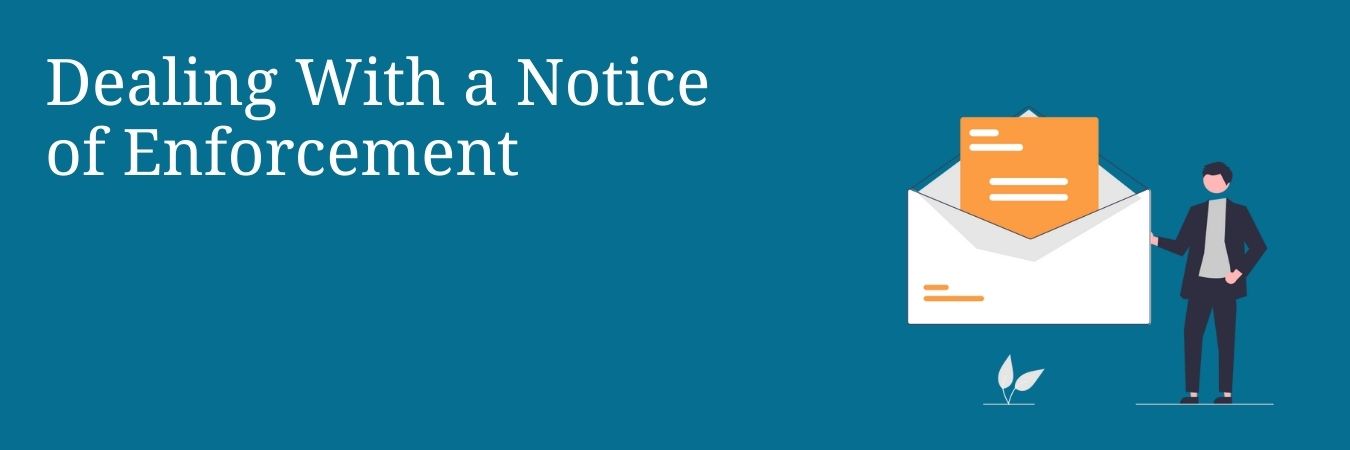If HMRC feel their attempts to recover money owed to them have failed via normal methods, they will up the ante using baliffs, which they refer to as enforcement.
This will article will explain their due process around enforcement, and also what to do if you find yourself in this situation.

Have You Received a Warning of Enforcement Action Letter?
These letters generally follow a personal visit by an HMRC officer. If that visit still hasn’t yielded resolution, HMRC will issue a letter stating their intention to start a ‘Taking Control of Goods Enforcement Action.’
The letter will explain that this will carry an additional charge, that will be added on to your existing debt.
If you’ve received this letter, you will likely have also spoken to the HMRC officer and be well aware of your situation. Putting your head in the sand is the last thing you want to do at this point, you need to either find a way to pay or, if that’s impossible, speak with an insolvency practitioner. Beyond this point, you should expect HMRC, or an appointed third party bailiff, to turn up at your business premises after a 7 day period has expired.
Is it Just HMRC Who Can Send a Notice of Enforcement?
In fact any creditor can send a notice of Enforcement with the assistance of a licensed bailiff. These letters have to follow a certain format (see an example here) and include your name, address, and amount owed.
Importantly, these can only be issued if the creditor has received a writ or warrant of control from the court, entitling them to proceed with baliff action. HMRC, by contrast, do not have to obtain a court order but can simply proceed with enforcement on their own volition.
Be Aware When to Expect the Baliffs
The law requires 7 full days to pass after the notice of enforcement has been issued and any baliff action.
This means 7 full days, not including the day upon which the notice was issued, not including Sundays, bank holidays, or the day of the actual visit itself.
For example if you receive the warning letter on a monday, you should not expect the bailiffs before the following wednesday.
The Initial Baliffs Visit
When baliffs first come to your business it is not usually to seize goods straight away. Rather, they will make an inventory of what they find with the intention of listing the goods whose total sale could clear the debt.
Once this is done they will issue you what is called a Controlled Goods Agreement and ask that you sign it.
What is a Controlled Goods Agreement?
Once the bailiff has made an inventory of goods, they will give you a further 7 days to pay before they return to seize these.
If you choose not to sign they can return anyway, remove the goods and sell them.
This process (formerly known as a ‘Walking Possession Agreement) will be presented to you for signing. After the 7 day grace period, the baliffs will now have legal right to remove the goods, even if that means forcible entry into commercial premises.
NB, baliffs are not allowed into your home at any time unless specifically invited.
If the baliffs actually remove goods from your premises they must issue you with a document called a ‘Notice of Sale’ which tells you how to prevent the sale of the goods, and when the actual sale will happen.
What Goods Can Be Seized?
There are strict rules around what baliffs can seize, which they must follow to the letter.
For example, they cannot remove:
- Anything hired or not fully owned by the company
- Anything which might be damaged by the removal process, i.e. lighting fixtures
- Cash or Loose Change
- Perishable Goods or livestock
- Safety equipment, i.e. fire extinguishers
- Tools of the trade, i.e. tools or vehicles essential for running a particular business (assuming alternatives are available)
